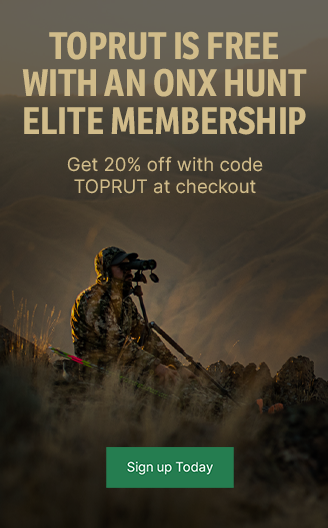In last week's article we suggested that dividing up your tag wish list into 3 distinct time periods was a good starting point to your overall application strategy. To continue on the theme of maximizing your long term draw success, this week we are going to offer some tips and observations about the core but often under-considered fundamental: draw odds.
Consider the following scenario: you are choosing between two hunts, one with 2% draw odds and another with 4% odds. What's the difference in terms of your likelihood to draw?
In the western big game landscape, "draw odds" are most often listed as a percentage. If a particular hunt is listed as having 50% draw odds, applicants for that tag in the previous draw had a coin flips chance of successfully drawing (or 1 in 2). Technically the "odds" for an event to occur are more often represented in the latter format (1 in 2). When listed as a percentage, the term "probability" is the more technically correct term. In our case this is semantics and not really an important distinction. But it can be very useful at times to think about the percentage draw "odds" for a hunt in terms of the other format (i.e. 1 in 2).
For purposes of illustration, we'll use the analogy of a sack full of marbles. Red marbles are bad and green marbles are good. In our simple 50% example there is 1 red marble and 1 green marble in the sack. Now blindly reach into the sack and pick a marble ("the draw"). There are 2 possible outcomes, and 1 of them is good (1 in 2).
Of course we can convert any draw odds percentage to sacks of marbles - although the arithmetic isn't always quite as simple. At 33% there are 3 total marbles with 1 green, at 25% there are 4 with 1 green, etc. As the draw odds percentage goes down, you get more marbles in the sack and the number of green ones relative to red declines.
Sometimes if you think in terms of green to red, the comparative difference of "draw odds" becomes more clear. When you apply for a 10% odds hunt you've got 1 green in a sack of 10 marbles. But with a 20% hunt, there are only 5 total marbles in that sack. Big difference! Sometimes what is obvious (that you are twice as likely to draw a 20% hunt over a 10% hunt) can be obscured by how our mind perceives percentages as they grow smaller.
Which brings us back to the original question when we considered 2% vs 4%. The important difference isn't 2% (4 minus 2), it's that you are twice as likely to draw the 4% hunt (1 in 25 vs 1 in 50).
Some may counter by arguing that you are still VERY unlikely to draw either tag in any given year and because of that they are basically the same. But that's the short view. If you are onboard with some version of a plan that includes a medium/long term strategy then you really need to think in terms of total tags drawn over a period of years. In a 10 year period, the chances you will draw a 4% tag at least once is almost exactly 1 in 3, and for 2% it is worse than 1 in 5. I know which I would choose if I was given some equivalent option in a draw that occurs only once every 10 years.
Learn more about the onX Elite Membership.
There are of course real reasons to sometimes choose a harder to draw hunt over one with better odds. For example, you may feel like the overall quality of the lower odds hunt is just significantly better and that the reward would be worth it if successful. Or if you apply for a lot of different tags across multiple states you may choose a strategy that includes applying for a couple of dream tags each year. In the end, there are no hard and fast rules to this and it comes down to your own individual goals and tolerance for risk.
From the dream tag perspective, take advantage of the states that currently have an application system that considers more than just your 1st application choice before moving on to the next application (Nevada and New Mexico for example). In these draw systems you can apply for a really difficult to draw hunt as your 1st choice and still get the advantage of applying for other hunts with better odds with your later choices (spoiler alert: these draw systems actually work to lower everyone's draw odds overall - a topic for another day).
As you apply for hunts this year and plan out your medium and long term strategy, keep the red and green marbles in mind. It is Christmas time after all. Happy holidays!
